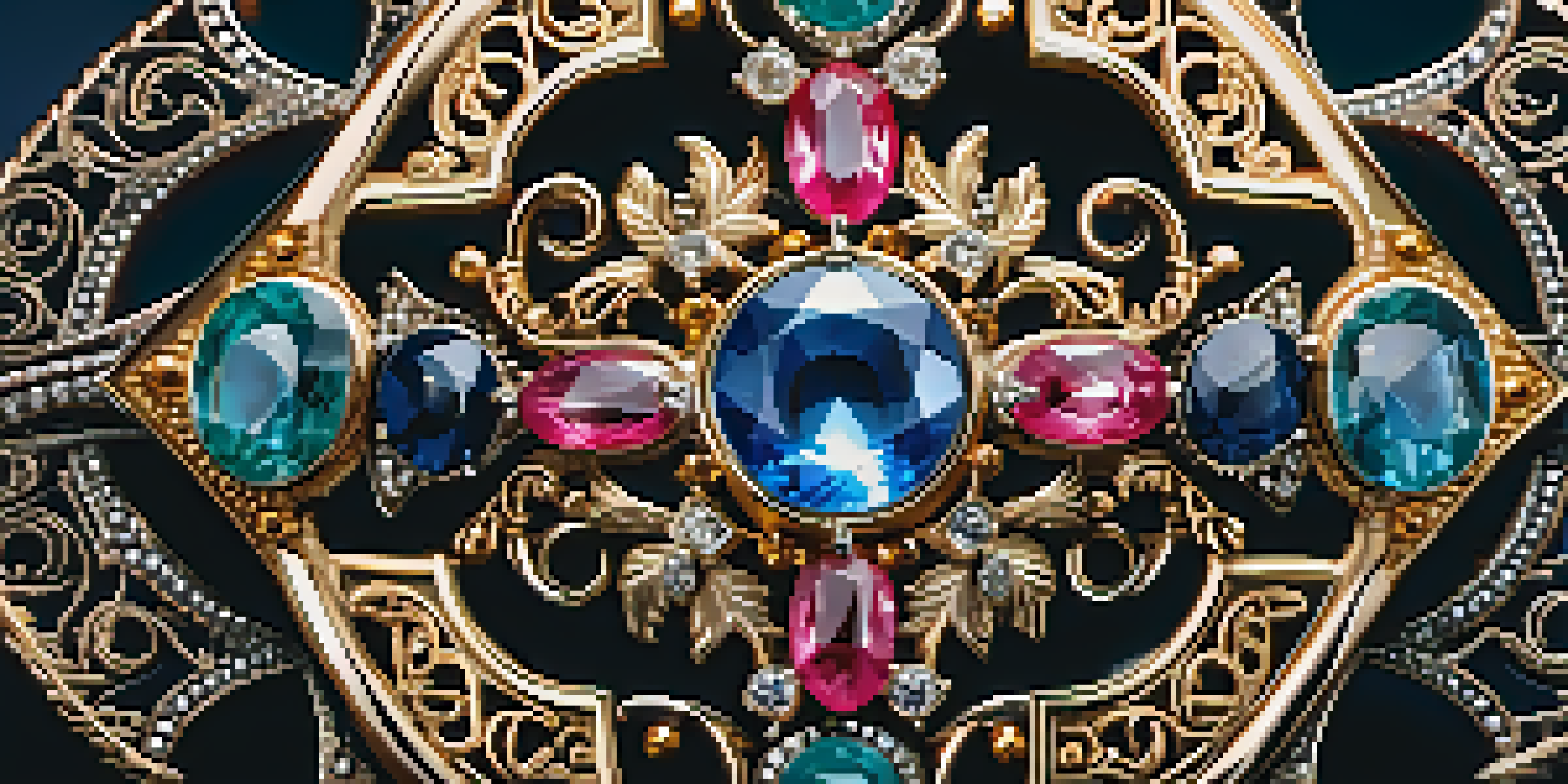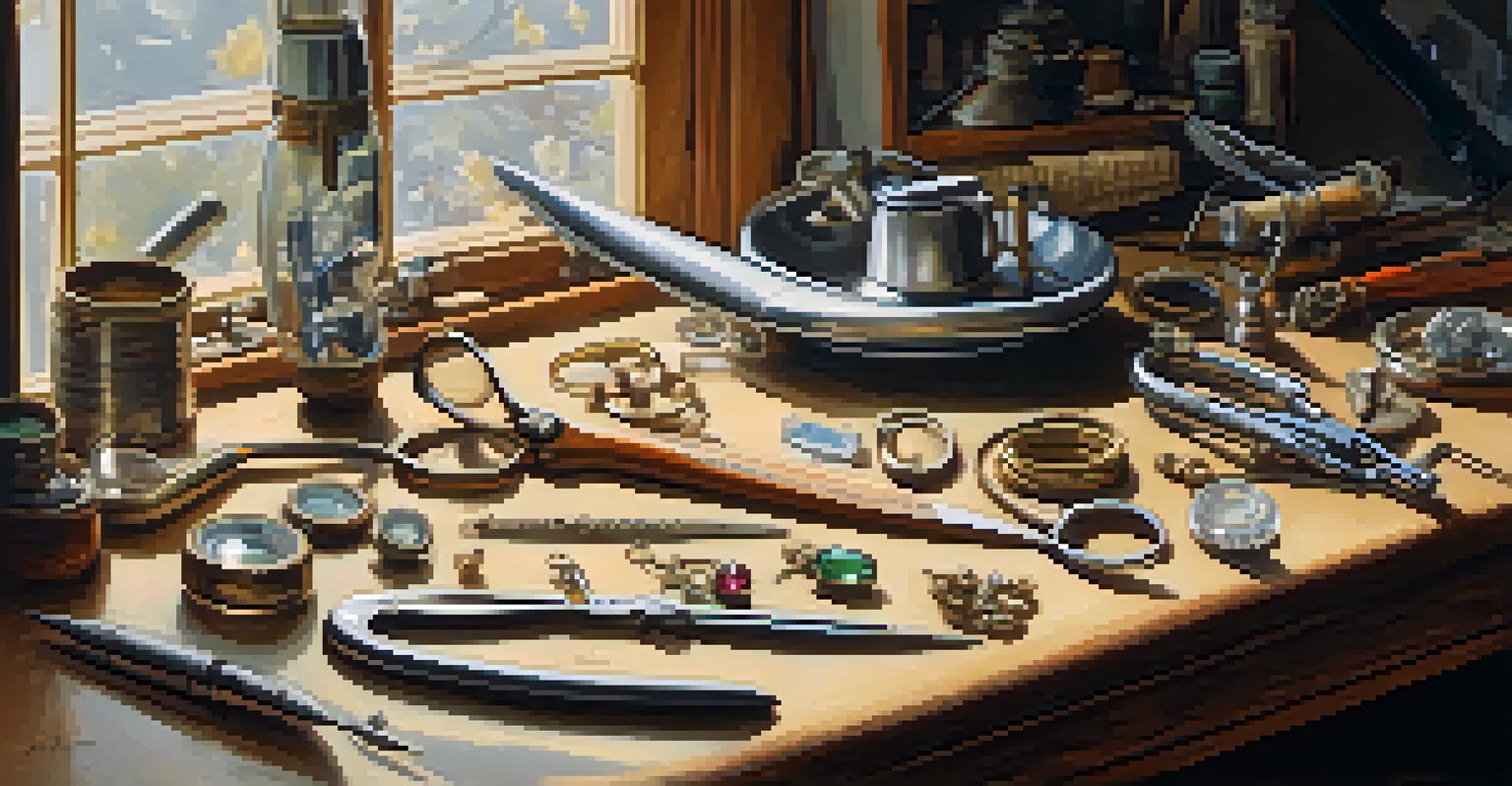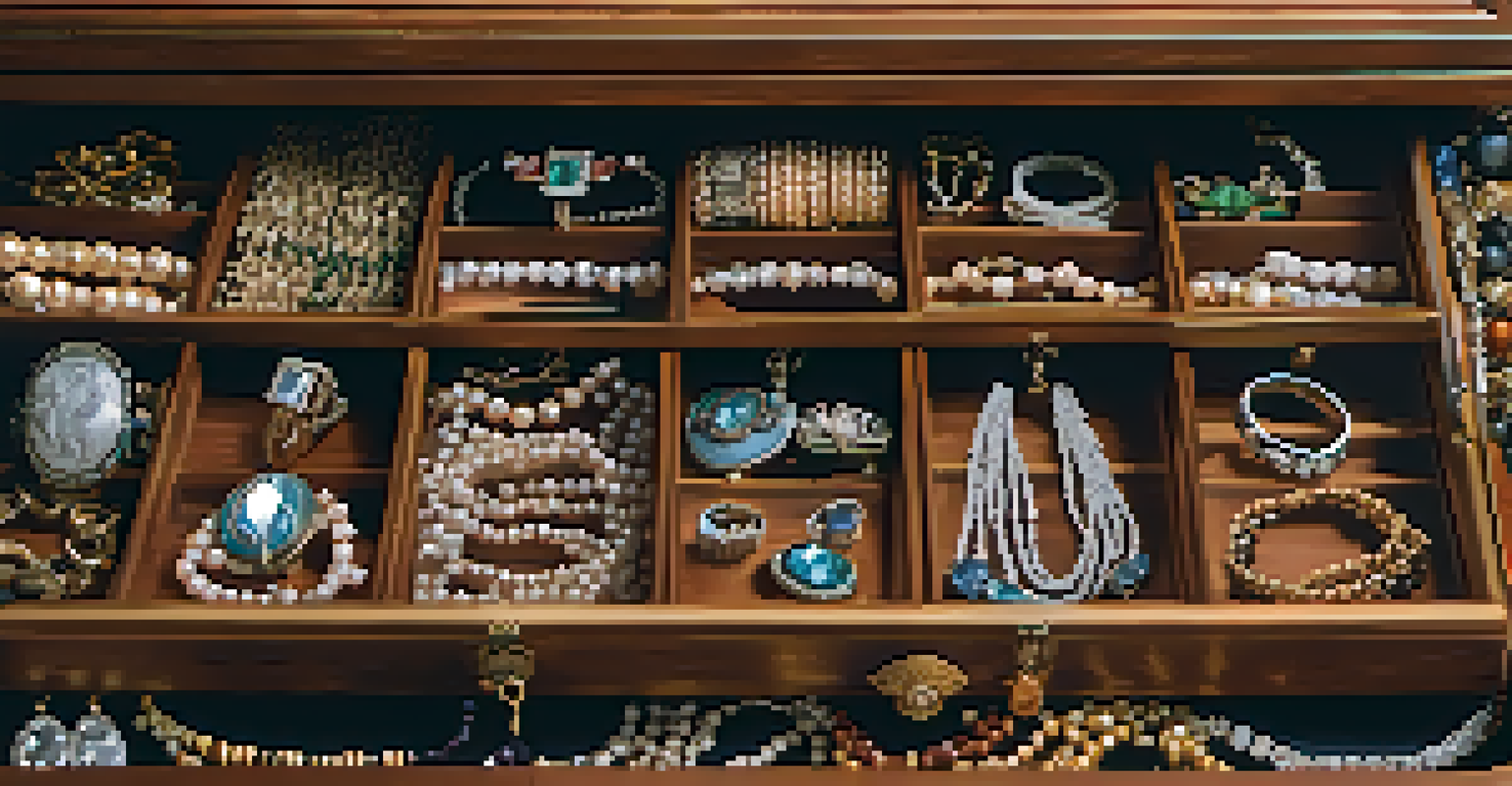How to Repair and Restore Vintage Jewelry Pieces

Understanding the Value of Vintage Jewelry
Vintage jewelry holds a unique charm that often tells a story of its own. Each piece can reflect the era it comes from, showcasing styles and craftsmanship that are hard to find today. Understanding its value not only helps in restoration but also deepens your appreciation for these timeless treasures.
Jewelry is like the perfect spice. It always complements what's already there.
Before diving into repairs, it’s essential to evaluate the piece. Factors such as the era, materials, and condition can significantly influence its worth. For example, a Victorian brooch made of gold may be worth more than a simple 1970s costume piece, even if the latter seems more stylish now.
By recognizing the intrinsic value, you'll be more mindful in your restoration efforts. It’s not just about fixing; it’s about preserving the history and beauty that make vintage jewelry so special.
Assessing Damage and Identifying Repairs Needed
The first step in repairing vintage jewelry is to thoroughly assess the damage. Look for missing stones, broken clasps, or tarnished metals. Sometimes, what seems like a major issue can be a simple fix, which is why careful examination is key.

Take notes on what needs attention. For instance, if a gemstone is loose, it might just require resetting. Conversely, a cracked stone might need a complete replacement. Understanding the specific repairs needed can help you devise a plan of action.
Value of Vintage Jewelry Matters
Understanding the era, materials, and condition of vintage jewelry enhances appreciation and guides restoration efforts.
Also, consider the tools and materials you'll need for the job. Having the right equipment from pliers to adhesives can make the process smoother and more effective. It’s always better to be prepared before starting any restoration work.
Gathering the Right Tools and Materials
Having the right tools at your disposal is crucial for any repair job. Basic tools include pliers, wire cutters, and a magnifying glass, which can help you see tiny details that need fixing. If you're dealing with a specific material like silver or gold, specialized tools might be necessary.
The most beautiful thing you can wear is confidence.
Materials are just as important. For instance, if you're replacing a missing stone, make sure to find one that matches the original in size and color. Using high-quality materials will ensure the longevity of your repairs and keep the piece looking its best.
Don’t forget about safety gear! Protective eyewear and gloves can be essential when working with sharp edges or chemicals, ensuring you stay safe while you bring your vintage jewelry back to life.
Cleaning Techniques for Vintage Jewelry
Before any repairs, a good cleaning can work wonders. Start by gently removing dirt and grime with a soft cloth or a brush specifically designed for jewelry. Avoid harsh chemicals that can damage delicate pieces; instead, consider using mild soap and water for a thorough yet gentle clean.
For tougher tarnish, a specialized jewelry cleaner can be effective. However, always test a small area first to ensure it doesn’t react negatively with the material. Remember, vintage jewelry often has unique finishes that can be easily damaged.
Essential Tools for Repairs
Having the right tools and materials is crucial for effectively repairing and restoring vintage jewelry.
After cleaning, always dry your jewelry completely. Moisture can lead to further tarnishing or damage, especially in pieces with intricate designs. A careful cleaning routine is essential for preserving vintage jewelry's beauty.
Repairing Common Issues Like Loose Stones
Loose stones are one of the most common issues in vintage jewelry. If a stone is merely loose, you might be able to simply reset it using a small amount of jewelry adhesive. Make sure to align it correctly to maintain the piece's original design.
For stones that are cracked or chipped, you may need to consider replacement. Try to find a matching stone that complements the original piece. This way, the integrity and aesthetic of the vintage jewelry remain intact.
If you're unsure about handling repairs yourself, don’t hesitate to consult a professional jeweler. They can provide expert advice or even perform repairs that require a delicate touch, ensuring your vintage piece is restored to its former glory.
Reassembling and Final Touches for Restoration
After making the necessary repairs, it's time to reassemble the jewelry. Carefully put all the components back together, ensuring everything fits snugly and securely. Take your time during this phase to avoid any mistakes that might lead to further damage.
Once reassembled, inspect the piece again. Look for any areas that might need a bit more attention or cleaning. Sometimes, a simple polish can bring an old piece back to life, enhancing its shine and appeal.
Caring for Restored Pieces
Proper care and regular cleaning are vital to maintaining the beauty and longevity of restored vintage jewelry.
Final touches can include adding a protective coating or storage solution. A jewelry pouch or box can help prevent future damage and keep your vintage piece safe for years to come.
Caring for Restored Vintage Jewelry
After you've put in the effort to repair and restore your vintage jewelry, proper care is essential to maintain its beauty. Store pieces in a dry, cool place, away from direct sunlight, which can fade colors and damage materials over time.
Regular cleaning is key. Even after restoration, dirt and oils can accumulate, so gently clean your pieces often to keep them looking pristine. Remember to use appropriate materials and methods specific to the type of jewelry.

Lastly, wear your vintage jewelry with pride! Showcasing your restored pieces not only honors their history but also allows you to enjoy the beauty and craftsmanship that went into creating them in the first place.